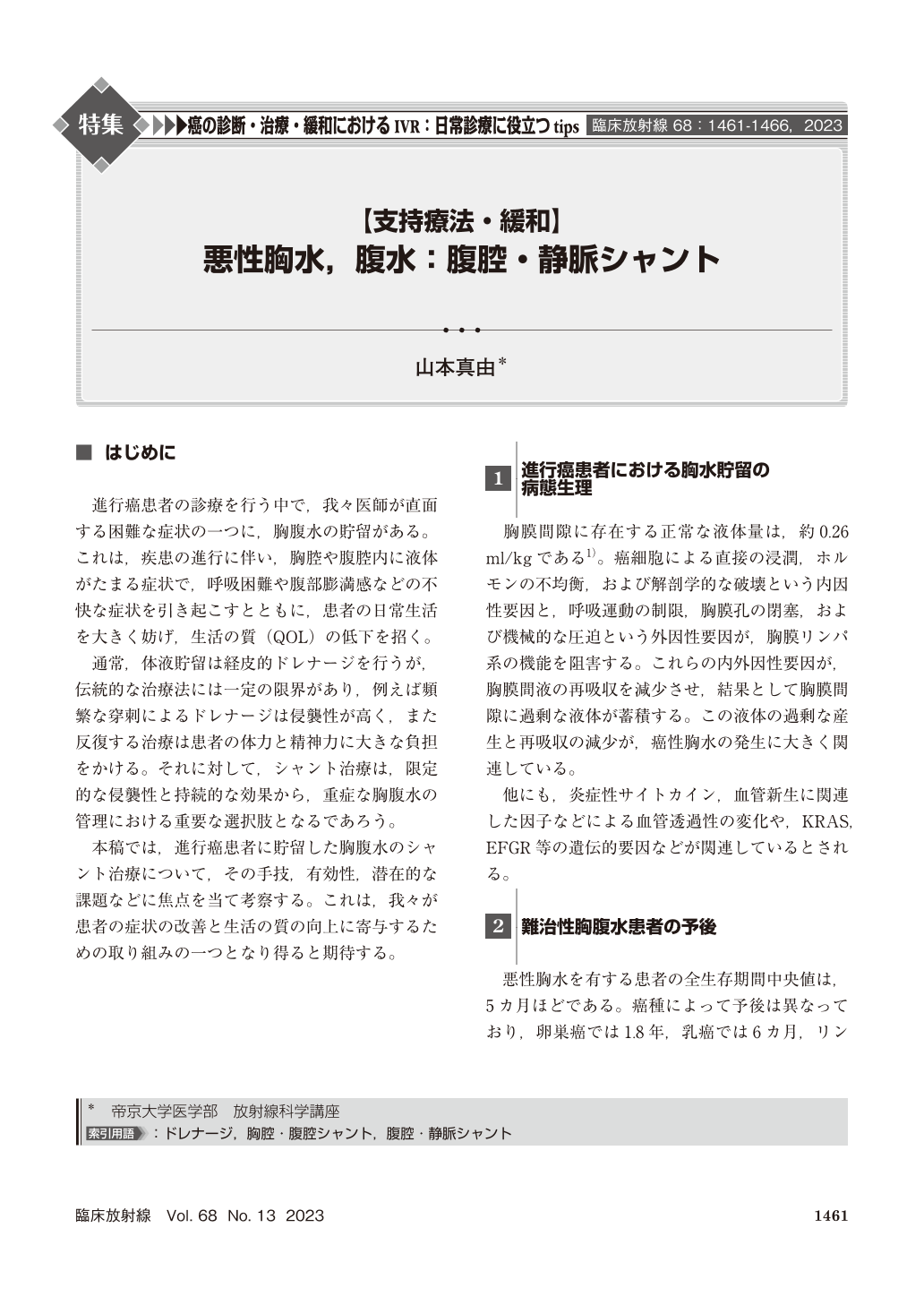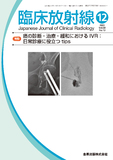Japanese
English
- 有料閲覧
- Abstract 文献概要
- 1ページ目 Look Inside
- 参考文献 Reference
進行癌患者の診療を行う中で,我々医師が直面する困難な症状の一つに,胸腹水の貯留がある。これは,疾患の進行に伴い,胸腔や腹腔内に液体がたまる症状で,呼吸困難や腹部膨満感などの不快な症状を引き起こすとともに,患者の日常生活を大きく妨げ,生活の質(QOL)の低下を招く。
The peritoneovenous shunt(PVS)is a subcutaneous shunt tube linked to a one-way pressure valve, connecting the abdominal cavity with the vena cava. This enables persistent discharge of ascitic fluid into the venous system, mainly the superior vena cava. The available kit in Japan is sold by Becton Dickinson, consisting of the peritoneovenous shunt valve kit and pleuroperitoneal shunt valve kit. Post-placement management of the shunt requires maintaining a pressure gradient between 3~5 cmH2O. Manual pumping ensures valve adherence, restricting backflow, while a pressure difference exceeding 5 cmH2O opens the valve for continuous flow, preventing tube occlusion. Indications for PVS include insufficient treatment effect from drug or radiation therapy, significant discomfort from ascites, and situations requiring frequent drainage. It’s contraindicated in cases of infectious ascites, peritonitis, DIC patients, and acute renal failure. Technical success rate is high, and symptomatic relief is achieved in over 80% cases. PVS is pivotal in improving the quality of life of cancer patients, as it alleviates symptoms.

Copyright © 2023, KANEHARA SHUPPAN Co.LTD. All rights reserved.


